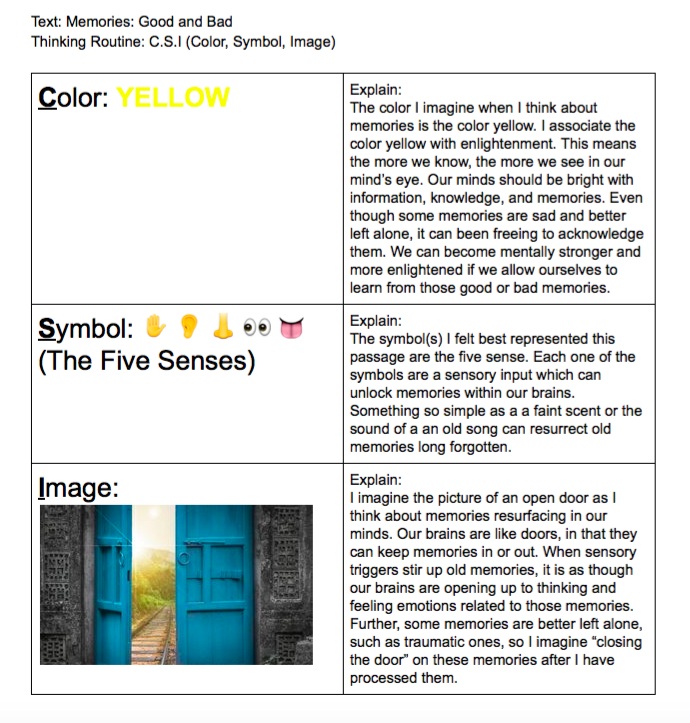I’ve written about my affinity for Thinking Routines before, and yep, here I go again. I continue to find these teaching and learning methods rich and thought provoking. This week’s post features a Thinking Routine I initially wrote off as “fluffy” until I applied it to a challenging passage from Readworks.org and considered how to extend it further.
Here’s what I love about the Color, Symbol, Image (C.S.I) Routine. It gives students freedom to apply their own thoughts to a text. So often they are only answering questions in response to a text and piecing together what they hope is the “right answer.” The C.S.I. Routine prompts students to respond to the text with independent thoughts and opinions. This is a valuable experience for our learners who must be able to analyze, process, and synthesize information. As with any newly introduced Thinking Routine (or instructional practice), taking the time to model matters. This will demonstrate for students how to process information and what level of explanation the teacher expects.
What’s the difference between a symbol and an image, you ask?
Some educators (especially at the elementary and middle school levels) guide students to use emojis (or other familiar symbols available through current technology) as symbols to represent their thoughts about the text. Images can be literal, illustrative, or metaphoric. The images can be sketched by hand or found online.
Take this thinking routine further by tweaking one of the corresponding prompts on Readworks.com (found at the end of the question set). Have students use The Write Structure language to put together a constructed response supported by evidence from the text.
The C.S.I Routine gives students time to process and consider deeper meanings of a text. Applying this routine to a text before asking students to write a formal response will encourage more thoughtful approaches to reading, thinking, and writing.


